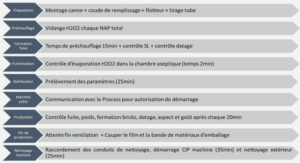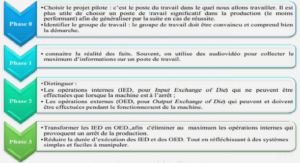The multilevel converter technology has been started by the concept of multilevel step wave in cascade H-Bridge converters in the late 1960s. This was an attempt to present a new control method that was useful to produce and employ the stepped wave at the output of such inverters (McMurray, 1971). The circuit of that type of cascade H-bridge converter was presented in (Bedford et Hoft, 1964). In 1970, the Diode Clamped Converter was introduced (Baker, 1980) but all these efforts was done in low power applications.
In medium-voltage application the Neutral Point Clamped (NPC) and then the Cascade HBridge (CHB) have been introduced in 1980s (Baker, 1981; Nabae, Takahashi et Akagi, 1981). In addition to these two types, the Flying Capacitor (FC) inverter which was introduced in 1960 as a low voltage one, has been evolved to be employed in mediumvoltage and high power industries in 1990 (Meynard et Foch, 1991).
As an application example of such devices is medium-voltage motor drive that was begun in the middle of 1980s when the 4500 V gate turn off (GTO) thyristors were commercialized (Wu, 2006). Afterwards, development of high power switches results in manufacturing insulated gate bipolar transistor (IGBT) and gate commutated thyristor (GCT) in the late 1990s (Steimer et al., 1997). These switches have been employed in medium-voltage and high power inverters rapidly because of their appeal characteristics, low power losses, simple gate control and snubberless operation (Wu, 2006).
Multilevel inverter contains several semiconductor switches and DC supplies. The combination of switches actions produces various voltage levels at the output. It shows the DC link and one leg of inverter in two-level, three-level and n-level configuration. The performance of semiconductor switches is shown by ideal switches.
Recently, multilevel inverters are gathering the researchers and industries attention due to their attractive features. Some of the major advantages of multilevel inverters are as follows (Kouro et al., 2010; Leopoldo G. Franquelo, 2012):
• Lower distortion in the output voltage due to multiple levels of output waveform;
• Lower dv/dt (voltage stress) that leads to endure the reduced voltage by switches;
• Lower common mode voltage which is helpful in motor drives;
• Lower switching frequency results in lower switching losses.
Different types of multilevel inverters have been proposed and built which are mostly for medium-voltage and high power applications (Franquelo et al., 2008) because of the fact that a single power switch cannot be connected to a medium-voltage grid directly.
Multilevel Inverter Topologies
Different topologies have been proposed for multilevel inverters (Franquelo et al., 2008; Kouro et al., 2010; Rodriguez, Lai et Peng, 2002) which are mentioned as follows.
Cascade H-Bridge
The cascade H-Bridge (CHB) multilevel inverter is mostly used in medium-voltage high power drives (Wu, 2006). CHB is composed of multiple units of single-phase H-Bridge (HB) inverter which are connected in series in each phase.
In a CHB multilevel inverter the output voltage of each phase is: Van=V1+V2+V3
There are two types of CHB: One with equal DC sources and another with unequal DC sources which are described below.
CHB with equal DC sources
Assume that Vdc1=Vdc2=Vdc3=E. To determine the number of levels in this mode the following equation can be used: L=2N+1
INTRODUCTION |






